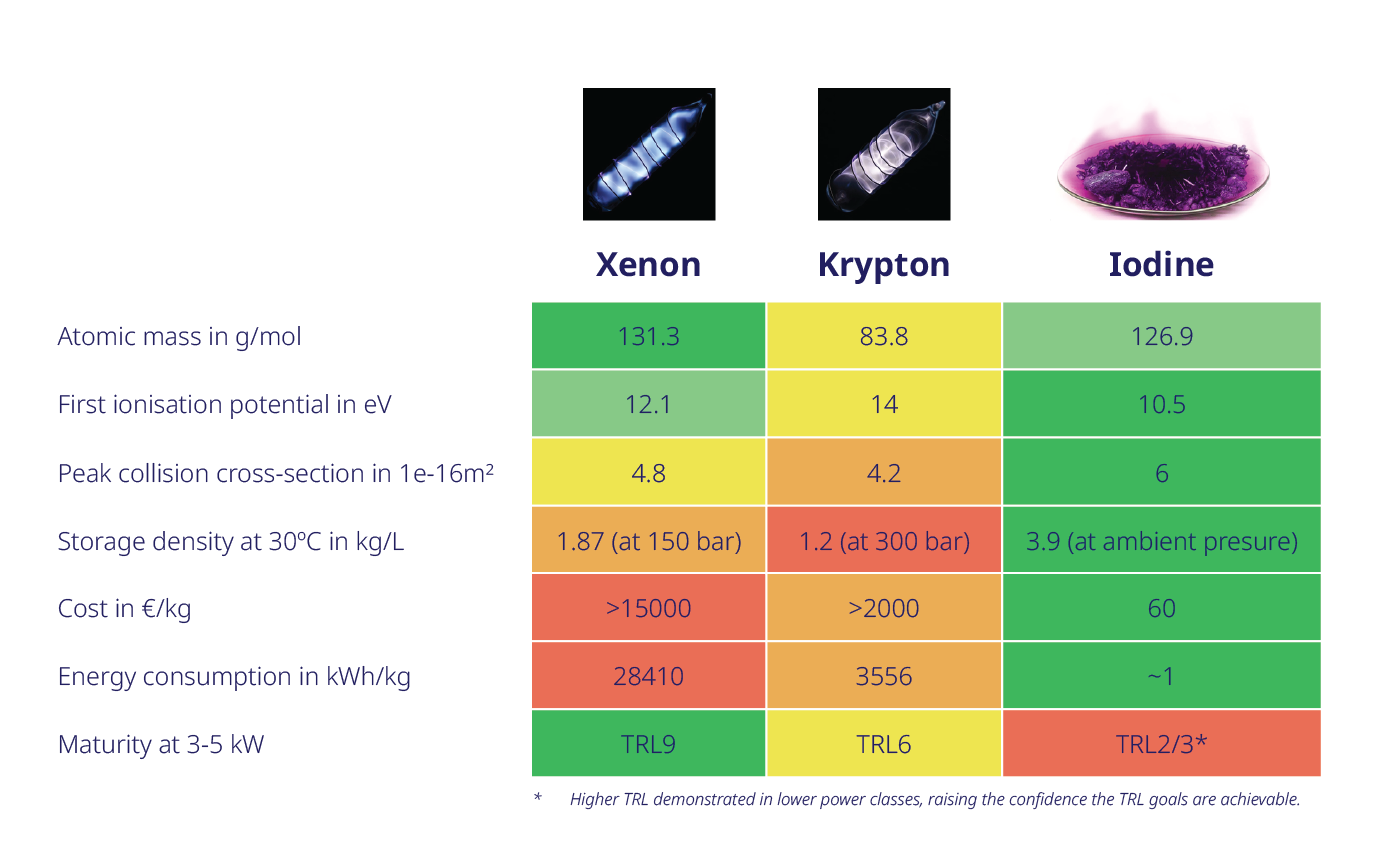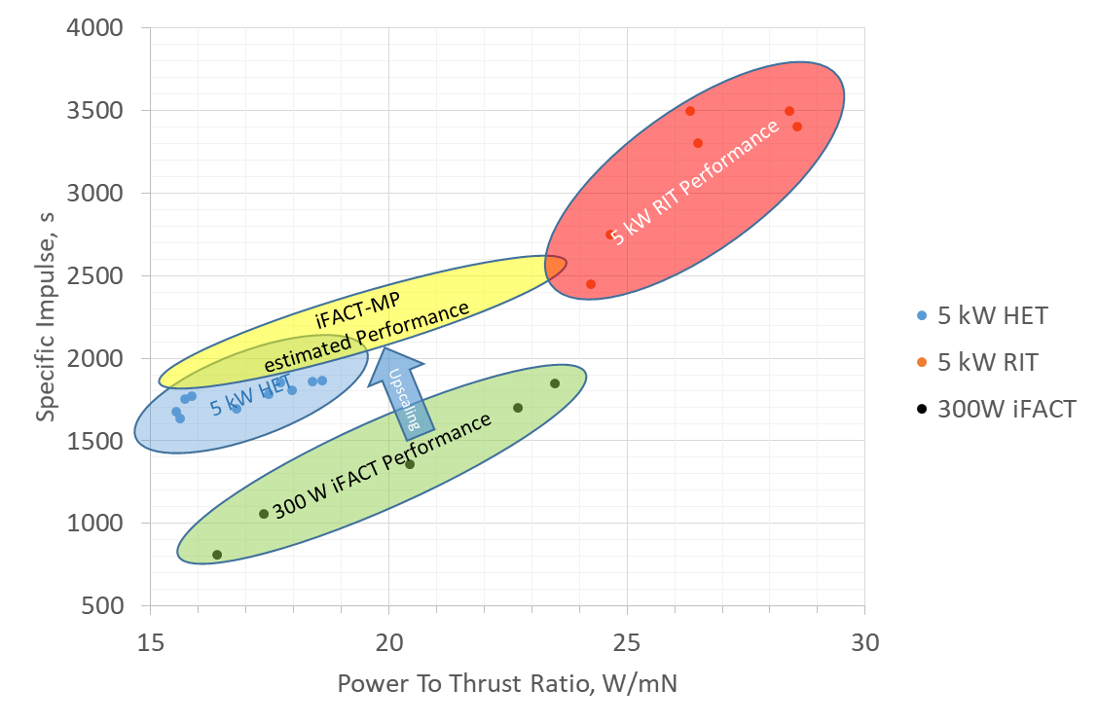The escalating demand for propulsion solutions in the satellite market underscores the necessity for high-efficiency systems in terms of specific impulse. This requirement facilitates a reduced propellant share (resulting in higher payload capacity) or the ability to launch multiple satellites simultaneously. The need for electric propulsion (EP) solutions in the kilowatt (kW) power range has intensified due to higher thrust demands for larger satellites and increased availability.
While current market offerings include subsystems employing conventional noble gas propellants, their elevated cost contributes to a disproportionate share of the propellant cost within the overall satellite budget. The recent geopolitical events have highlighted Europe's vulnerability, particularly its dependence on noble gas production, a significant factor in the sudden spike in prices.
Considering these challenges, there is a pressing desire for an alternative propellant, distinct from the conventional Xenon noble gas. This alternative should not only match in terms of performance but also demonstrate sustainability, affordability, and most importantly, be readily available from European sources. The aim is to establish non-dependence on other countries for a secure and reliable propellant supply.
Iodine excels in all these points and offers even more advantages, summarized in the table below.

In response to the evolving demands of the satellite market, a paradigm shift in propulsion solutions is underway, emphasizing high efficiency and cost-effectiveness. This shift is particularly crucial to reduce propellant shares, enhance payload capacity, and streamline satellite launch processes. Amidst this landscape, the iFACT-MP program emerges as a pioneering initiative, building upon the iFACT project's foundation. This endeavour is aimed at advancing iodine Electric Propulsion (EP) systems into the mid-power range, addressing critical challenges and leveraging a host of advantages over conventional propellants.
Advantages
Iodine, offering performance akin to the state-of-the-art Xenon propellant, possesses attributes vital for EP systems, including a high atomic mass for maximized thrust per ionization and efficient acceleration. Compared to Krypton, iodine stands out with its remarkably low cost, high storage density, and operational flexibility. The solid propellant feature not only aligns with space constraints but also streamlines integration into satellites, eliminating time-consuming loading procedures on launch sites.
Further, the cost and environmental impact of traditional noble gas propellants, exemplified by the staggering energy consumption in Krypton production, underscore the need for alternative, sustainable solutions. Herein lies iodine's distinct advantage, especially in its potential for efficient recycling, requiring significantly less energy. Germany's ample iodine recycling capacity positions it as a strategic player, ensuring independence in the spacecraft market.
Collectively, the iFACT-MP program, through these advantages, not only tackles contemporary propulsion challenges but also spearheads a more sustainable, cost-efficient era in electric propulsion, setting the stage for Europe's leadership in satellite technology.
Disadvantages
The primary impediment hindering the widespread adoption of iodine for missions lies in its relatively low Technology Readiness Level (TRL), currently standing at 2-3. This falls short of the desired TRL for applications in the 3-5 kW power range. Despite its numerous advantages, the ongoing challenge is to elevate iodine's maturity to meet the specific requirements of higher power classes. The need for substantial development efforts underscores a critical aspect that the iFACT-MP program aims to address, aiming to advance iodine Electric Propulsion (EP) systems to a more robust TRL, ensuring their viability and effectiveness for diverse mission profiles.
Solution

As a part of iFACT-MP, the ACFT developed and tested in iFACT for 300 W anode power shall be upscaled to challenge current state-of-the-art xenon thrusters, while operating with iodine. Figure 2 illustrates the comparison of high TRL European state-of-the-art xenon thruster performance in the 3 kW to 5 kW region and the 300 W iFACT thruster technology. Further, the estimated improvement as a result of the upscaling of the 300W iFACT thruster to the 3 kW to 5 kW range is indicated. Similar to HET scaling, the PTTR is in the same order of magnitude, while the specific impulse improves significantly.